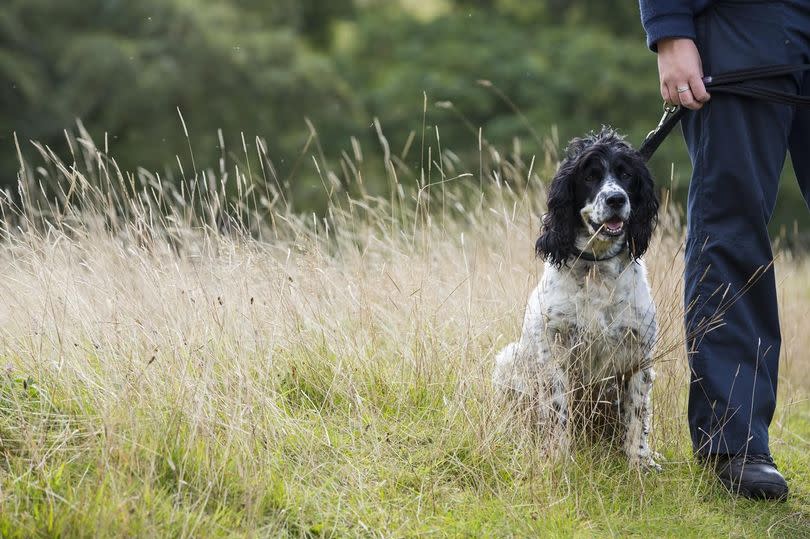National Trust makes plea to dog owners as spring is sprung on moorlands
Our moorlands will soon be alive with the symphony of skylarks and the bubbling note of curlew. Birds of prey like merlin hover above as late spring edges towards early summer and new life emerges from bracken, gorse, and highland grass.
The nesting season for British birds begins in April and lasts until July amplifying birdsong and adding to our joy on countryside walks. Greater Manchester is surrounded by moors, which provide cover for species like the stunning golden plover, lapwings, and the handsome wheatear to thrive.
The winchat, meadow pipit, and locally, twite - known as the Pennine linnet - also breed on the moors. But as well as natural predators they face another danger - us and our dogs.
Now The National Trust in Marsden on the border of Greater Manchester and Yorkshire is asking dog owners and walkers to keep to the paths and ensure dogs are on a short lead until July 31st for the sake of moorland birds.
The moors around Marsden provide the perfect breeding ground for some of the nation’s rarer birds such as golden plovers, whose summer dress is a remarkable spotted hood and cloak of gold and black with a white border. Curlews and merlins also breed there. These three and others build their nests of grass or a slight hollow in the ground in heather or grass, rather than in trees, making them extremely vulnerable to damage.

Although their nests are cleverly camouflaged so as not to attract the attention of predators, this also means that people can be unaware of the impact they may have on these birds. Dog owners may think their animals are under close control, but dogs may run through a nest without their owner’s knowledge.
Just the presence of dogs off-lead is enough to scare birds away and prevent them from nesting, or cause them stress that leads to them wasting vital energy by frequently flying out the way, failing to lay eggs or even abandoning their chicks.
It is a legal requirement to keep dogs on leads on open access land from March-July, regardless of the presence of livestock. To protect the birds, the National Trust Rangers have been patrolling the moor, and engaging with members of the public.

They can lend National Trust leads to those who have forgotten to bring one, or you can borrow one from the National Trust’s offices in the Old Good’s Yard, Marsden.
Dog owners can learn more about how to help protect local wildlife by attending one of the Trust’s Doggy Ranger walks (treats included!) The next one is on Saturday 11 May.
Professional dog walkers that use the moor need a licence to use National Trust land for commercial purposes. If this applies to you, get in touch with the team at marsdenmoor@nationaltrust.og.uk
Kate Divey-Matthews, Resilient Landscapes Officer for the National Trust, said: “We love dogs at Marsden Moor and they are welcome to walk here but please keep them on a short lead in the spring and summer.
“The National Trust has a duty to protect the wildlife on its land, which is designated a Site of Special Scientific Interest (SSSI) for its breeding birds and blanket bog habitat, and breeding success is critically dependent on not being disturbed.
“Reservoirs across Marsden Moor such as Redbrook are popular with people whose dogs love a swim but many birds nest around the waters’ edge. There are also livestock on the moor at this time of year which can be scared or injured by dogs off leads.
“Dogs can still have a beneficial, stimulating walk while remaining on a lead. Exercise requirements vary, but a shorter walk that involves lots of sniffing can be even more tiring than running a longer distance.”
The National Trust manages 2,300 hectares of Marsden Moor, which is a Site of Special Scientific Interest, a Special Protected Area and a special Area of Conservation due to the ground nesting bird population and blanket bog habitat.

 Yahoo News
Yahoo News 
